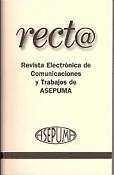Análisis comparativo de redes neuronales profundas para la predicción del precio de mercado de bitcoin
DOI:
https://doi.org/10.24310/recta.24.1.2023.19858Palabras clave:
Bitcoin, Redes Neuronales, Series temporales, predicción financieraResumen
Uno de los problemas más desafiantes de los últimos años es el estudio financiero de las criptomonedas con el fin de conocer su comportamiento futuro. El auge de la inteligencia artificial nos está ofreciendo herramientas que nos permiten abordar el asunto con mayor precisión. En particular, el aprendizaje profundo nos permite generar redes neuronales que aprenden de grandes volúmenes de datos, identificando así patrones imperceptibles para los humanos. En este trabajo, nos centramos en el estudio de Bitcoin, la criptomoneda de mayor valor y popularidad del mercado actualmente. A la hora de pronosticar su precio, se han implementado tres tipos de redes neuronales profundas y un modelo comparativo. Los resultados del análisis comparativo concluyen que los patrones temporales resultan ser mías representativos que los espaciales al estimar el comportamiento del precio de cierre futuro de Bitcoin.
Publicación Facts
Perfil de revisores N/D
Información adicional autores
Indexado: {$indexList}
-
Indexado en
- Sociedad Académica/Grupo
- N/D
- Editora:
- UMA Editorial. Universidad de Málaga
Descargas
Publicado
Cómo citar
Número
Sección
Licencia
Derechos de autor 2024 Aaron López-García

Esta obra está bajo una licencia internacional Creative Commons Atribución-NoComercial 4.0.






